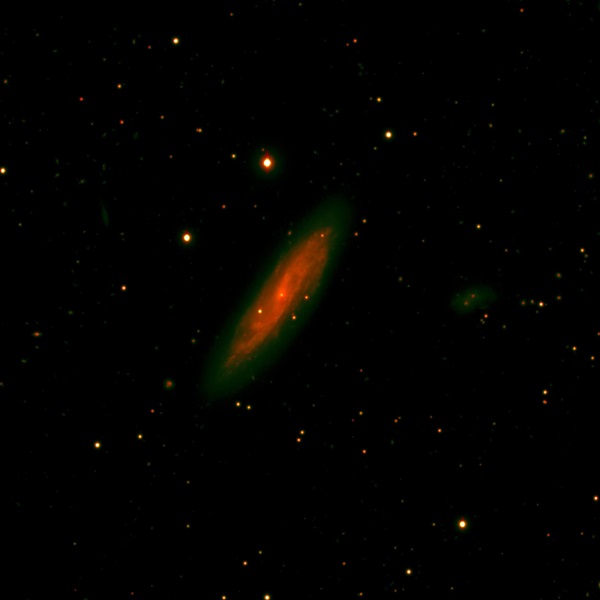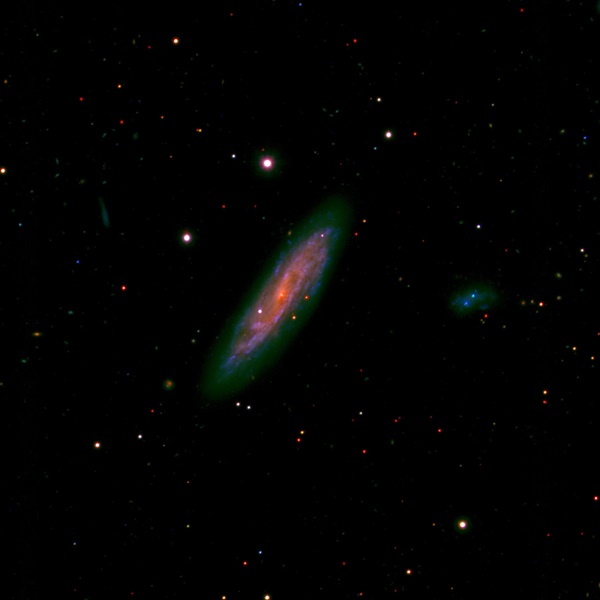Key Takeaways:
The Large Binocular Telescope on Mount Graham, Arizona, has taken celestial images using its twin side-by-side, 27.6 foot (8.4-meter) primary mirrors together, achieving first “binocular” light.
U.S., Italian and German partners in the telescope, known as the LBT, are releasing the images today. First binocular light is a milestone not only for the LBT – now the world’s most powerful telescope – but for astronomy itself, the partners say.
The first binocular light images show three false-color renditions of the spiral galaxy NGC 2770. The galaxy is 102 million light-years from our Milky Way, a relatively close neighbor. The galaxy has a flat disk of stars and glowing gas and is tipped slightly toward our line of sight.
The first image combines ultraviolet and green light and emphasizes the clumpy regions of newly formed hot stars in the spiral arms. The second image combines two deep red colors to highlight the smoother distribution of older, cooler stars. The third image is a composite of ultraviolet, green and deep red light and shows the detailed structure of hot, moderate and cool stars in the galaxy. The cameras and images were produced by the Large Binocular Camera team, led by Emanuele Giallongo at the Rome Astrophysical Observatory.
“To have a fully functioning binocular telescope is not only a time for celebration here at LBT, but also for the entire astronomy community,” UA Steward Observatory Director, Regents’ Professor and LBT Corp. President Peter A. Strittmatter says. “The images that this telescope will produce will be like none seen before. The power and clarity of this machine is in a class of its own. It will provide unmatched ability to peer into history, seeing the birth of the universe.”
Regents’ Professor and Steward Observatory Mirror Lab Director Roger Angel was one of the UA astronomers who conceived the basic idea for the LBT in the early 1980s. The UA Mirror Lab, world-renowned for pioneering mirror technologies, cast the LBT mirrors in its giant rotating furnace and polished them by a unique stressed-lap technique to virtual perfection. Angel was involved earlier in UA research that is developing adaptive optics technologies for giant telescopes, technologies that defeat atmospheric turbulence.
“The LBT gives me the most satisfaction of any astronomy project I’ve worked on, because it is very revolutionary, and because it has given Arizona the largest and the best telescope in the world,” Angel says. “When all the pieces are in place, the LBT will take images sharper than any other telescope. I think it’s the most likely telescope to take the first pictures of planets around other stars because of the unique advanced technologies used to build it.”
LBT Director Richard Green says, “The amount of time and work that was put into this project to reach the point where we are today is immense. We have gone through challenging moments, but to see the telescope operational with both mirrors is a great feeling. Everyone who has worked on this, at all levels, is enormously proud of what has been accomplished.”












